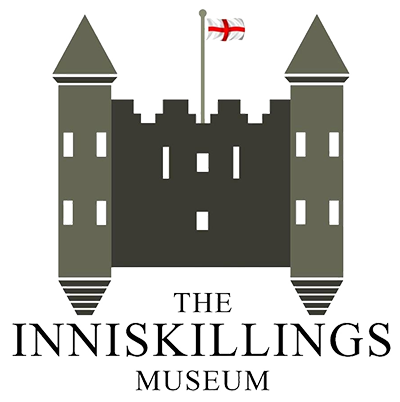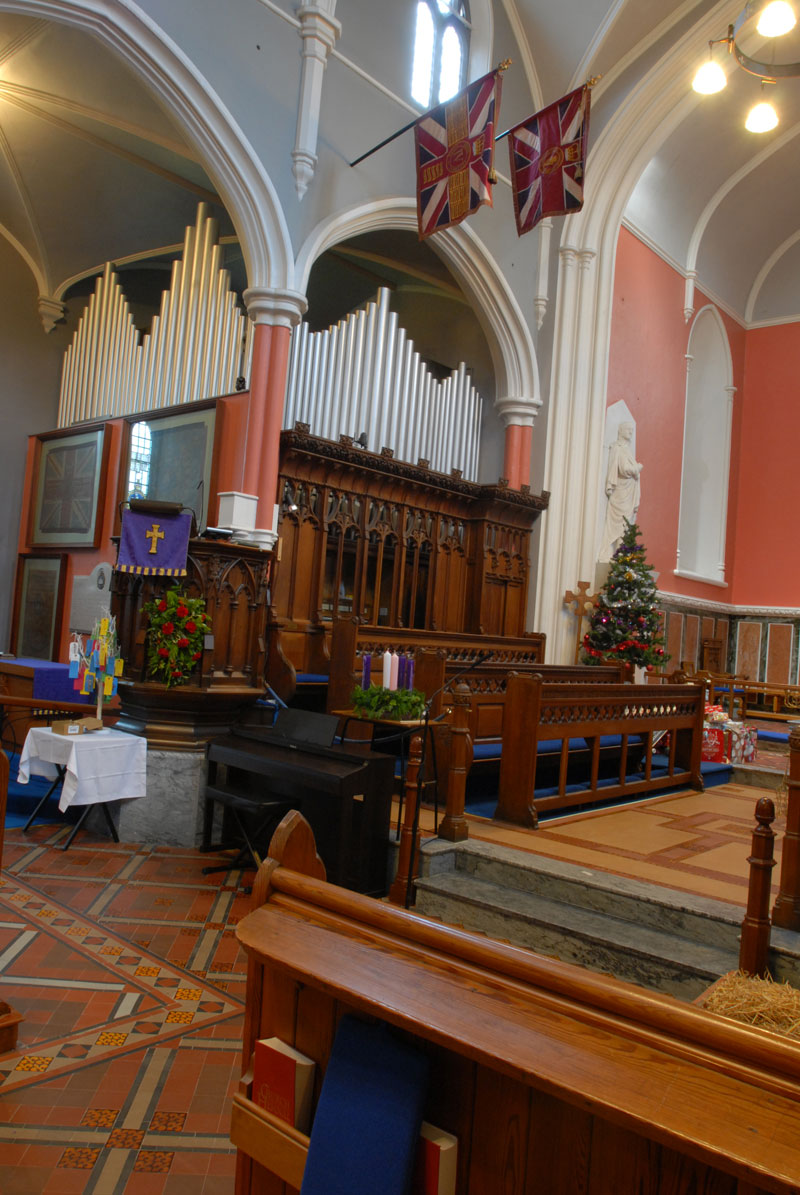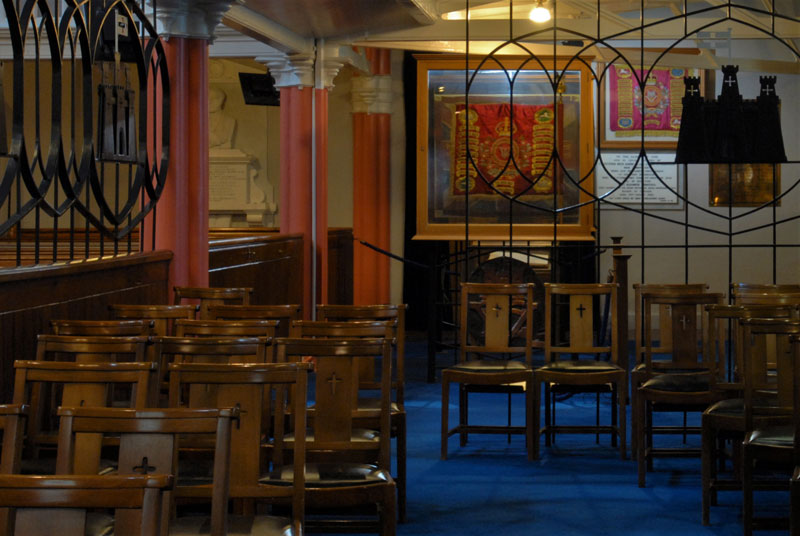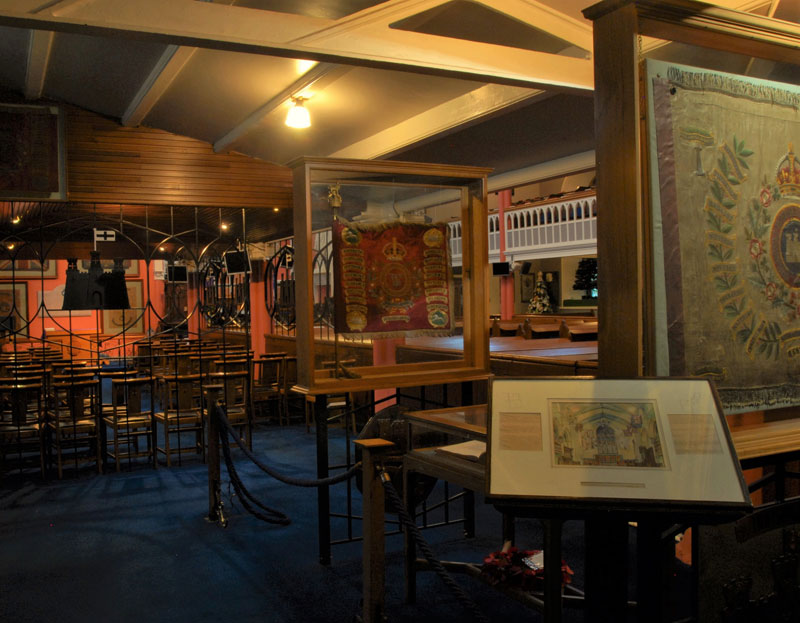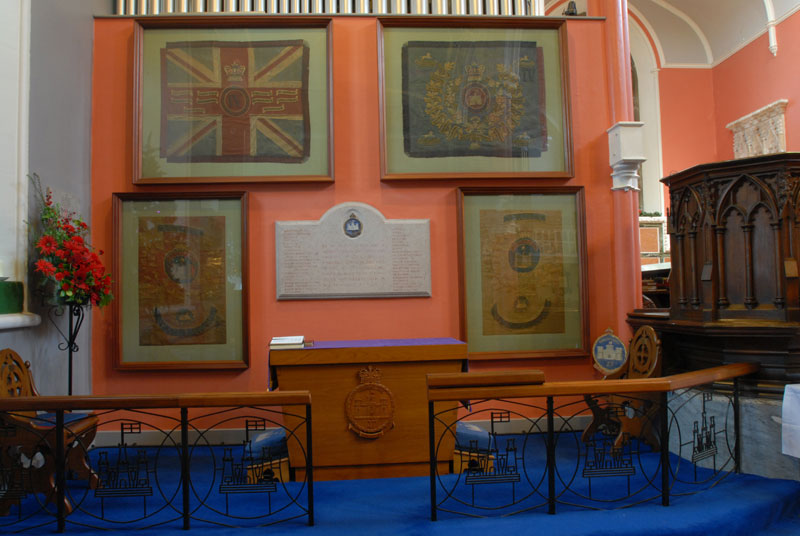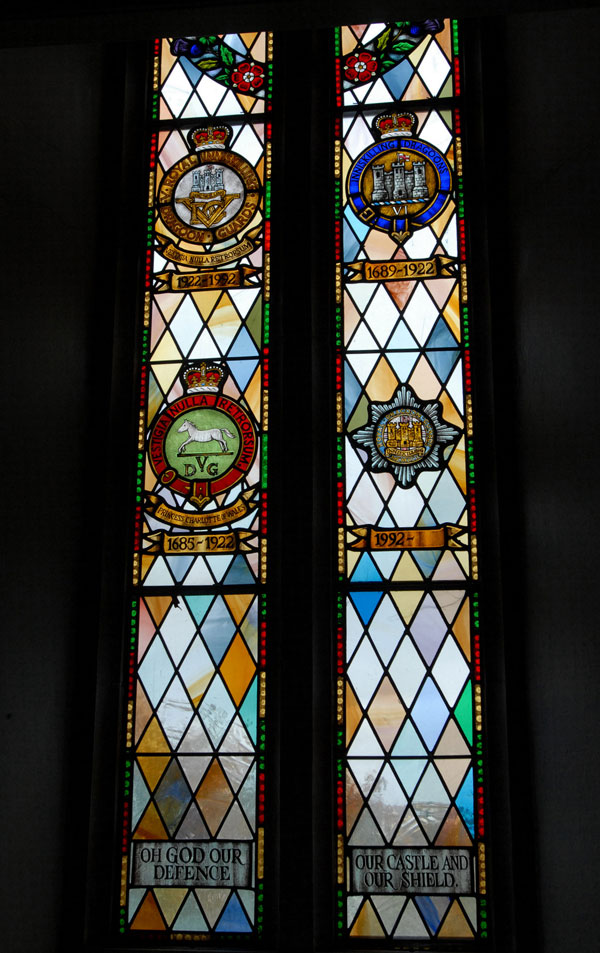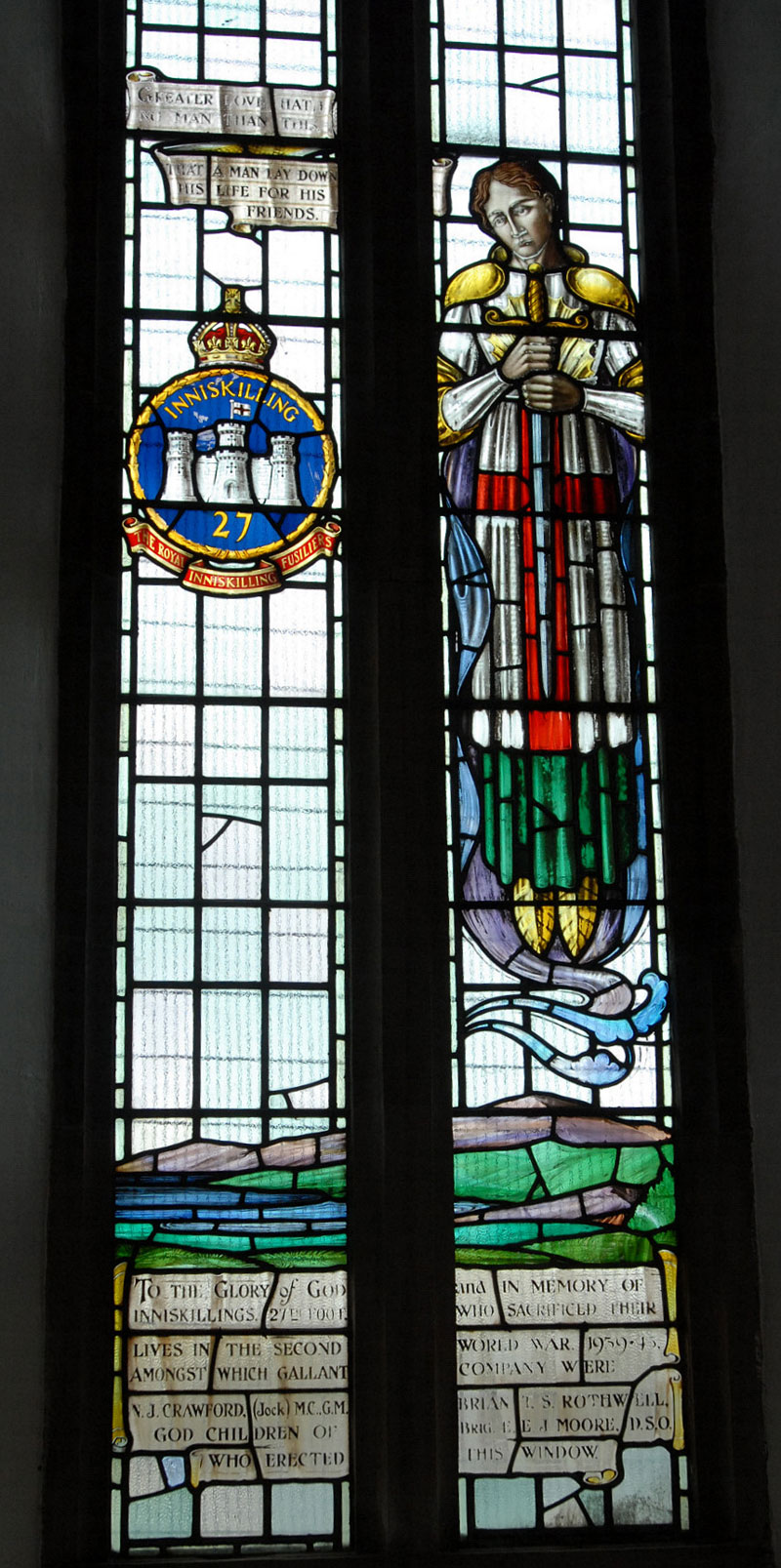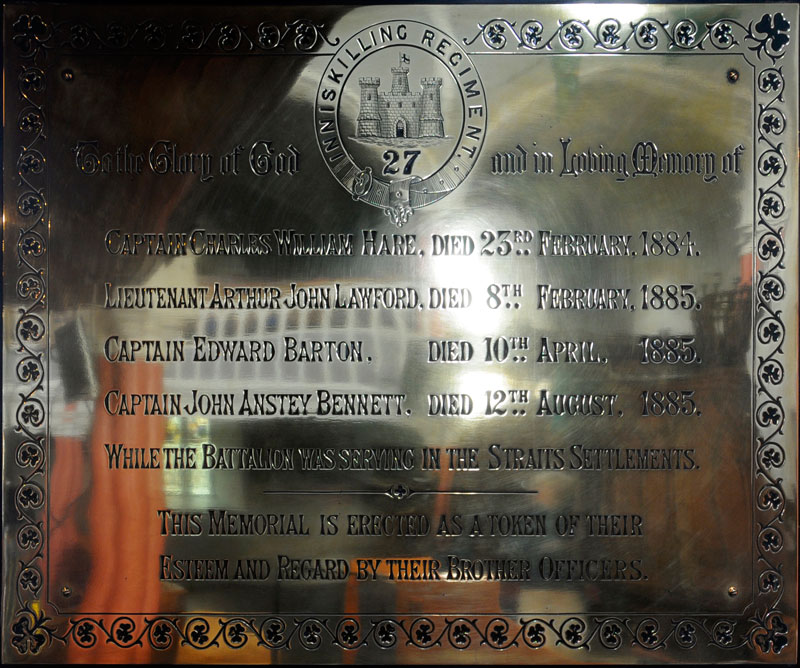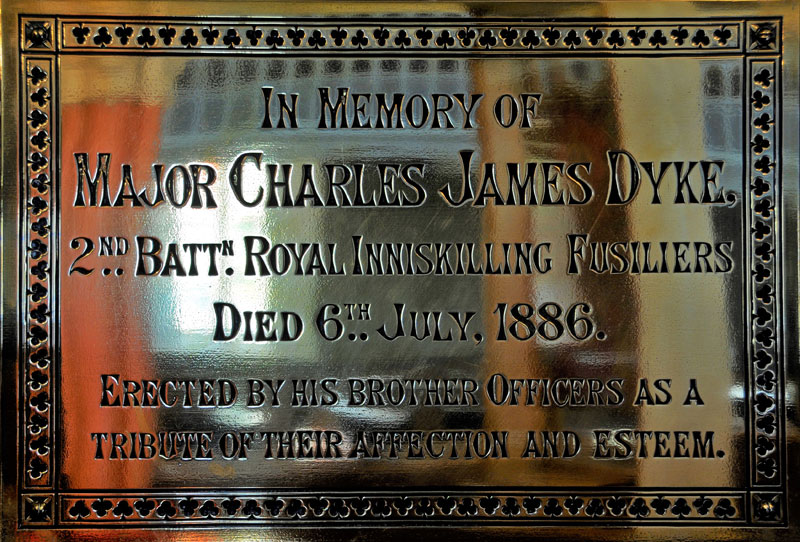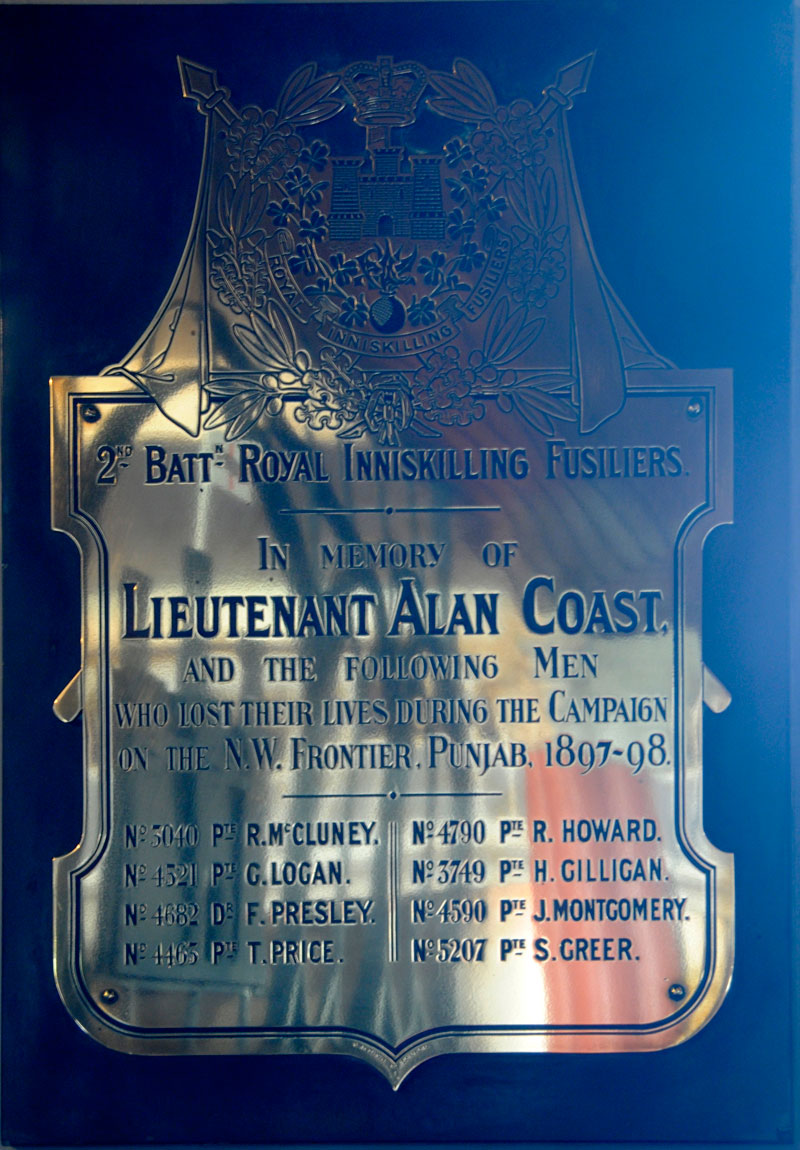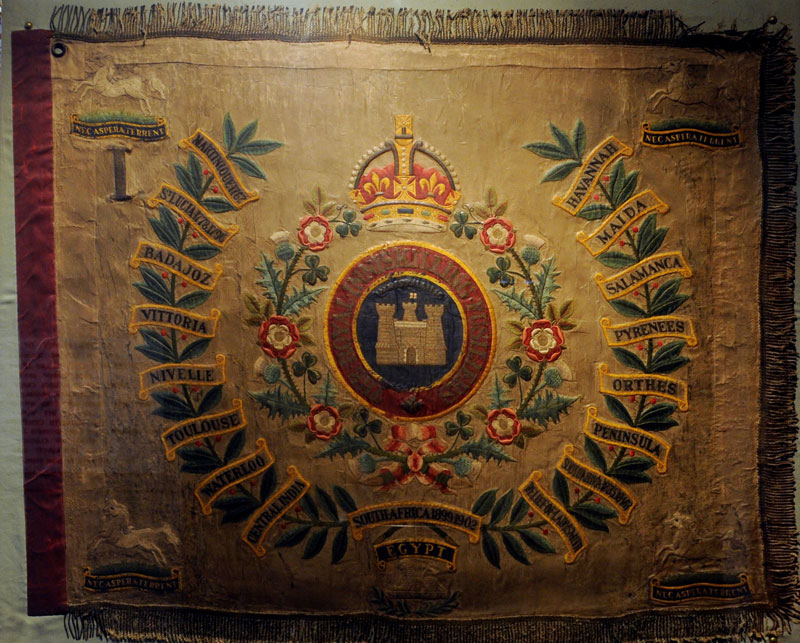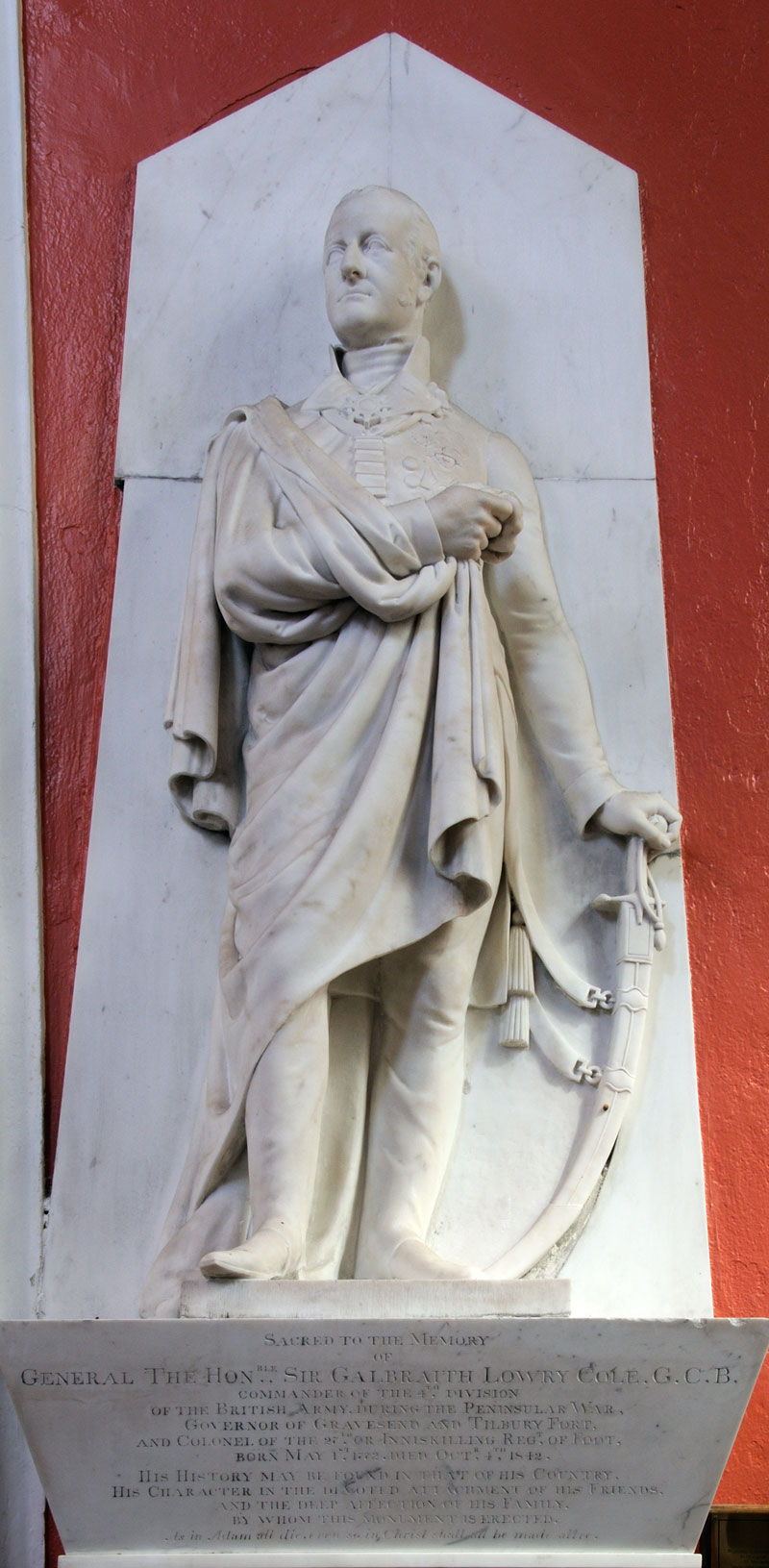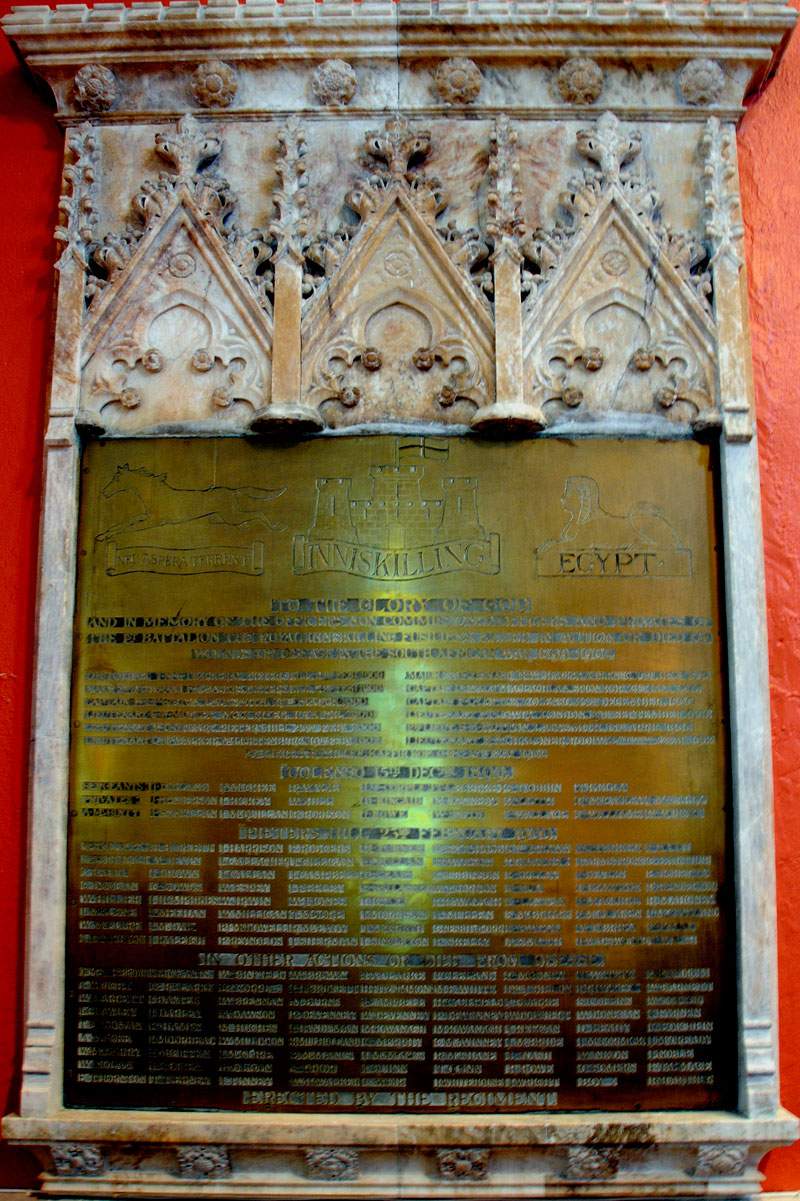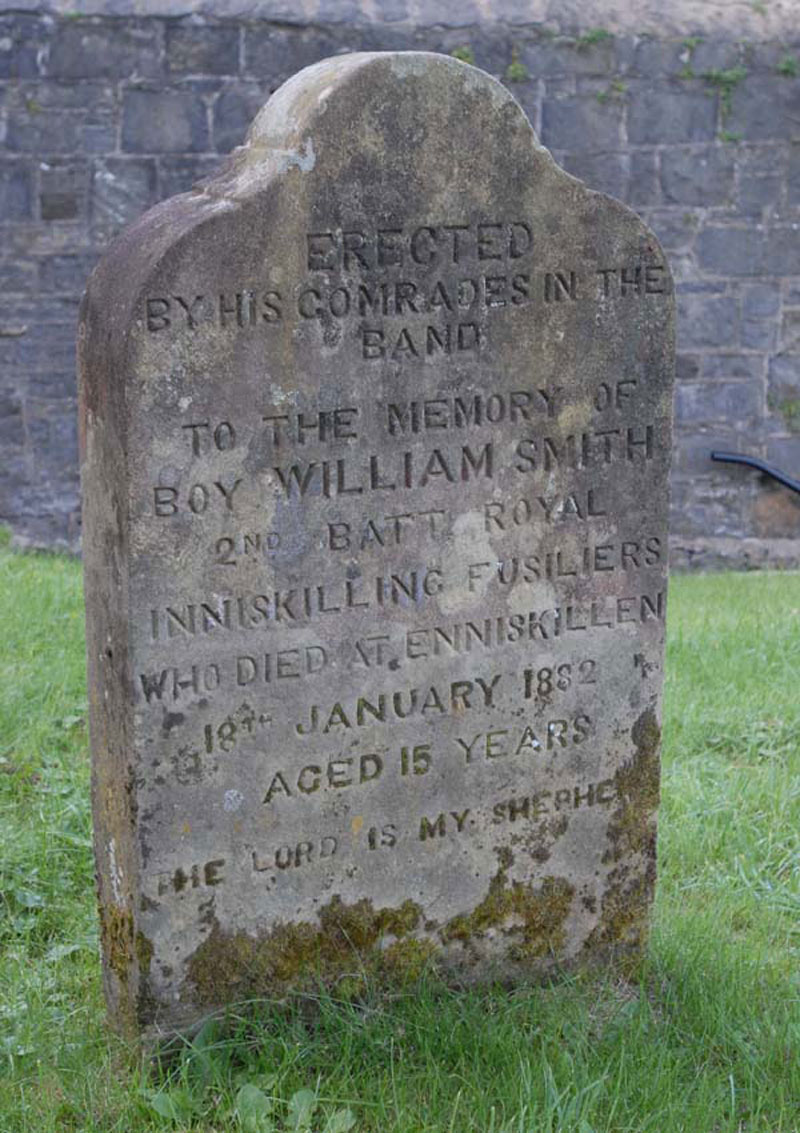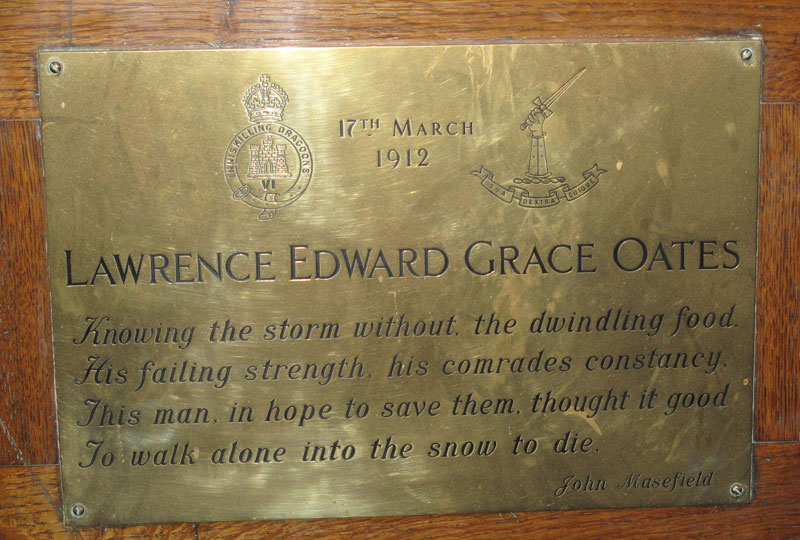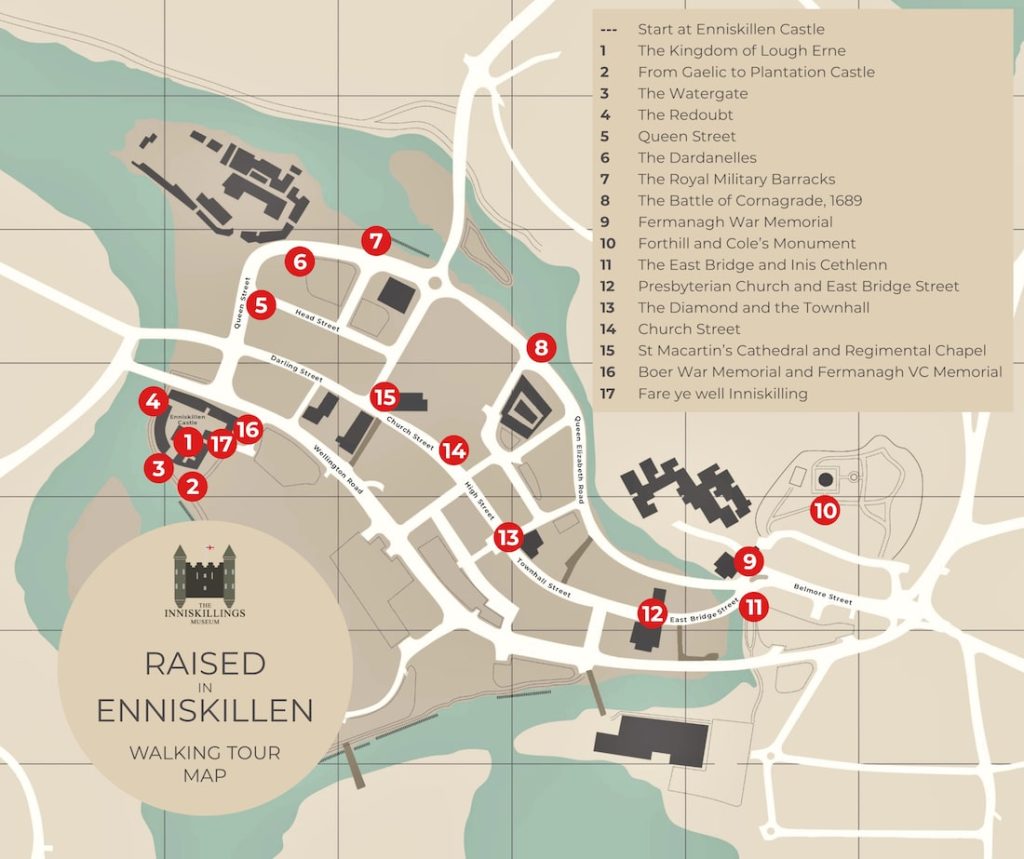St Macartin’s Cathedral, Enniskillen Captain William Cole, the founder of Enniskillen, was responsible for the building of the church as part of his undertaking to settle English families on the grant of land given to him in 1611 by James I. The site he chose is the higher of the two hills on the island. The first church, St Anne’s, was simple and small with a tower and spire and roofed with shingles.
The Chapel After the amalgamation of the Royal Inniskilling Fusiliers with the Royal Irish Fusiliers and the Royal Ulster Rifles in 1968, the Regimental Association of the Royal Inniskilling Fusiliers suggested that a chapel to the Royal Inniskilling Fusiliers be provided in the church of the town of their origin. This was accomplished in 1970. The 5thRoyal Inniskilling Dragoon Guards were included.
The North Aisle is enclosed by a wrought iron screen featuring the castle motif of the regimental badge. The Regiment’s battle honour, Egypt, is demonstrated by the pyramidal formation of the ceiling.
In the east is the communion table incorporating the Inniskillings regimental badge. Surmounting it is a granite plinth inscribed with the Inniskilling Fusiliers’ Battle Honours and surrounding this are the Sovereign’s and Regimental Colours dating from 1859 and the two Colours presented to the 4th (Fermanagh Militia) Battalion in 1886. Facing, on the side of the balcony, are the two Colours of the Donegal Ulster Volunteer Force Battalion which became the 11th Battalion of the Inniskillings during the First World War.
On the north wall, beginning in the east, is a series of Memorial Plaques and Memorial windows, including windows for the two regiments.
Outside the west entrance to the chapel is a Remembrance Book which records all ranks of the Inniskilling Fusiliers killed in action from 1815 to 1945.
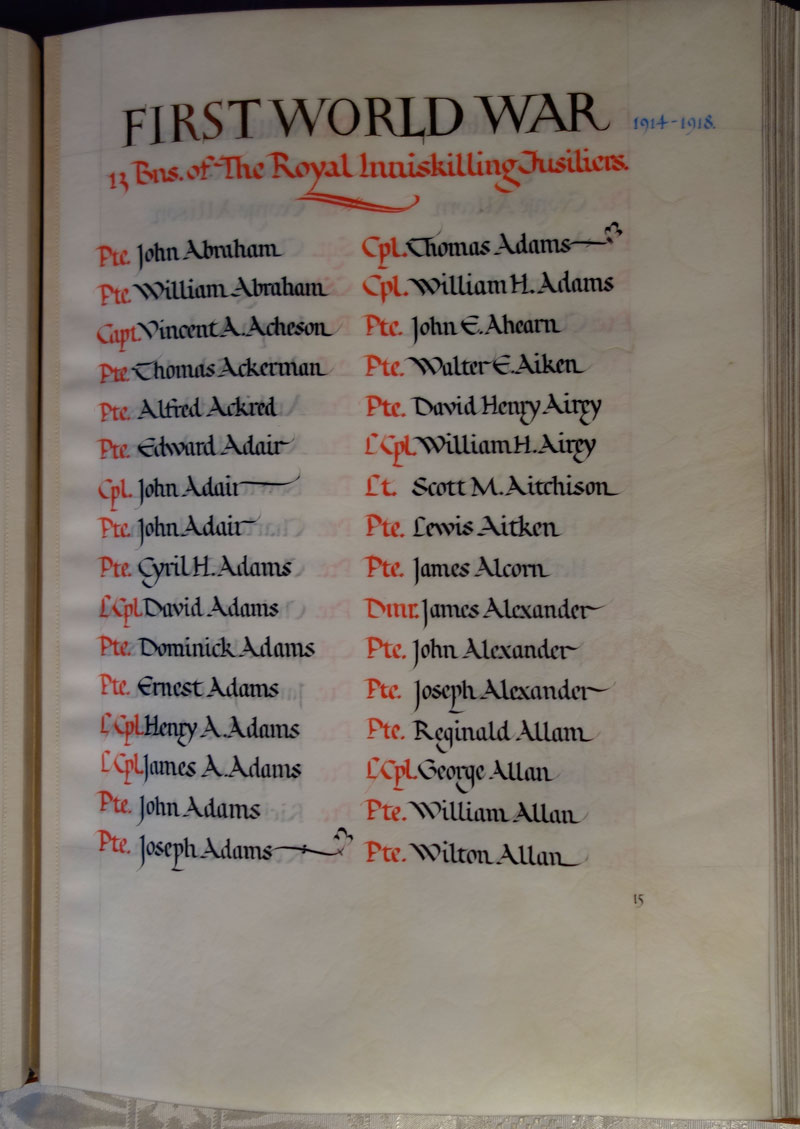
Flanking this book is the Standard of the Vth Royal Inniskilling Dragoon Guards presented in 1938, and the Colours of the 1st Battalion, Royal Inniskilling Fusiliers, presented in 1938 and 1939.
On the west wall at the rear of the chapel is the last Standard of the Vth Royal Inniskilling Dragoon Guards, laid up in 2014.
Against the north wall in the choir is a statue of General Sir Galbraith Lowry Cole, G.C.B., who commanded the 1st/27th Inniskillings at the battle of Maida, Italy, 1806, and later the 4th Division, which included the 3rd Battalion, 27th (Inniskilling) Regiment of Foot, in the Duke of Wellington’s army during the Peninsula War, 1808-1814. Opposite is a statue of his brother, the second Earl of Enniskillen, John Willoughby Cole (1768-1840) in the robes of a Knight of the Order of St Patrick; he commanded the Fermanagh Militia.
Beside the altar is a brass memorial tablet to the 183 men of the Royal Inniskilling Fusiliers who were killed or died of wounds or disease in the South African War, 1899-1902. Elsewhere in the Cathedral are other memorials and flags of military interest.
In the graveyard are several head stones on graves of soldiers who died while garrisoned in one of the barracks in Enniskillen.
The new memorial window, installed to commemorate all who served in the Inniskilling Regiments in the First World War.
The newly installed Oates Plaque, in its third and, hopefully, final resting place. It was originally presented to the regiment at the Granting of Freedom of the town to the 5th Royal Inniskilling Dragoon Guards, and initially installed in the Town Hall. Later moved into storage in the County Museum before being put on display in the Inniskillings Museum.
For more information on St Macartin’s Cathedral please visit: http://www.enniskillencathedral.com/
